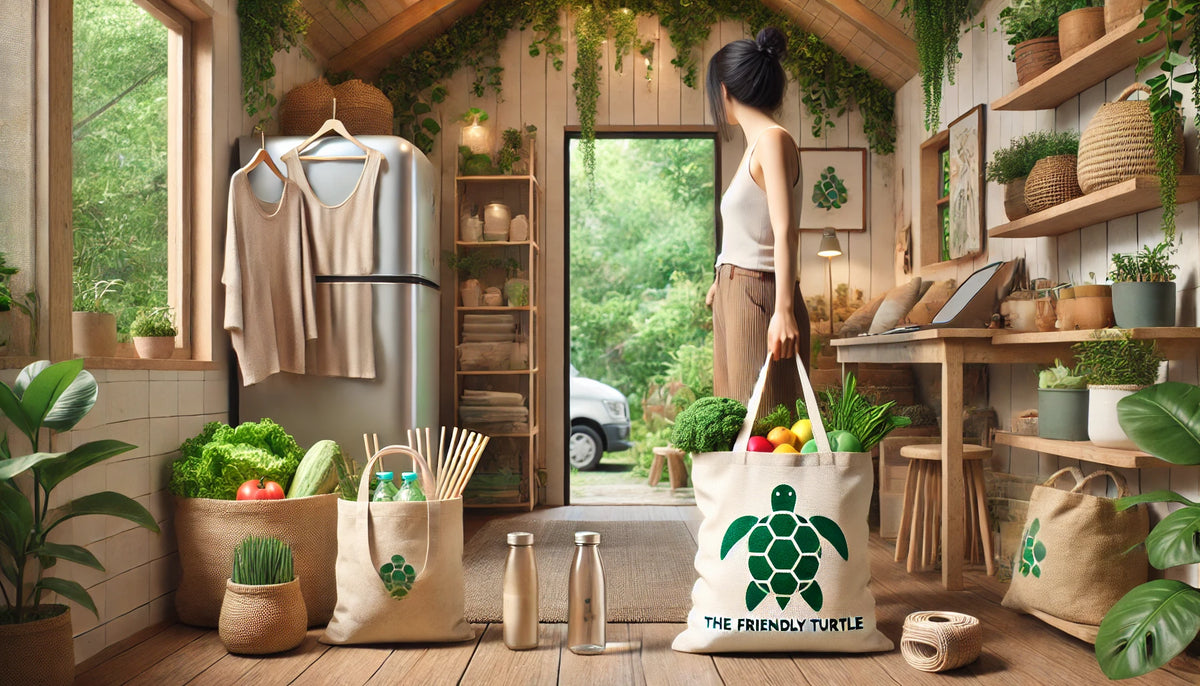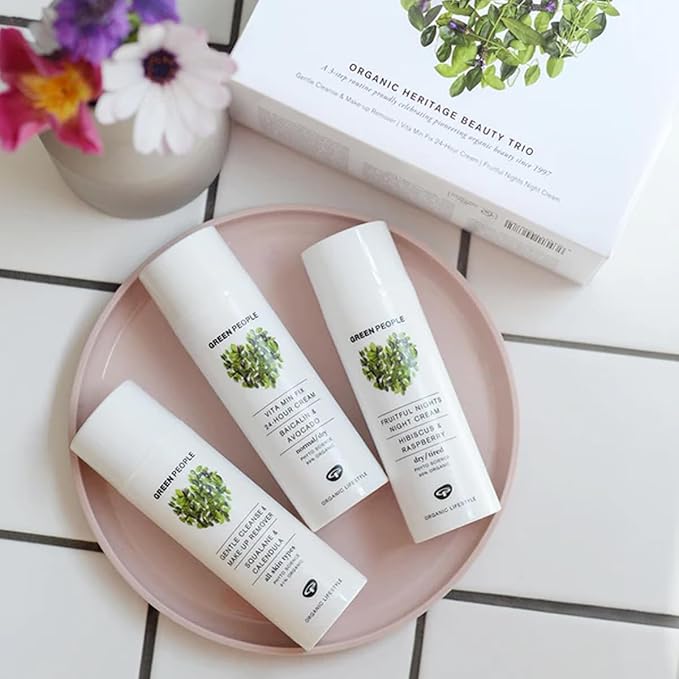At Friendly Turtle’s EcoBlog, we explore how to create a zero-waste kitchen without feeling overwhelmed. Reducing food waste, embracing reusable alternatives, composting, and rethinking grocery shopping can all make a significant environmental impact. From swapping plastic wrap for beeswax wraps to cooking from scratch and organising your kitchen for success, even small changes add up over time. A zero-waste kitchen isn’t about perfection—it’s about mindful progress. Step by step, you’ll reduce waste, save money, and create a healthier, more sustainable home that reflects your values.
Share your articles with us and get published! Reach out at hello@friendlyturtle.com.
Living Sustainably: 5 Ways You Can Be a Conscious Consumer

It’s 2024, folks! Consumers don’t just care about price tags and brand names anymore; they are becoming increasingly aware of the impact of their choices on the environment.
Environmental concerns and climate change are at the forefront of their minds, which is why the way they shop and consume has evolved.
Consumers across all generations are willing to spend more for sustainable products. But Gen Z is leading the charge. It’s being called the eco-conscious generation. About 58% of this consumer cohort prefers to buy sustainably sourced products.
Why don’t you also give conscious consumerism a try? You don’t have to give up everything you love. You just have to be mindful of how your choices as a shopper impact the environment.
That said, here are some super practical, easy ways to be a more conscious consumer without overhauling your entire life.
#1 Buy Less, Choose Well
It’s tempting to grab the latest sale item or impulse purchase something because it’s trendy. But here’s the thing: the less you buy, the less you waste.
It’s the consumer culture that pushes you to think that you need the latest gadget or a new wardrobe every season. So, be more intentional about what you buy.
The next time you’re eyeing that extra pair of shoes or the latest gadget, ask yourself if you really need them. This way, you can reduce waste and avoid that cluttered, overwhelming feeling that comes with owning too much stuff.
And when you buy, shop for quality over quantity, advises Earth Day.
Instead of getting five cheap t-shirts that shrink after one wash, invest in a shirt that is made of high-quality material. It will look better and last longer. That might cost a little more upfront, but it will pay off because you won’t need to replace it any time soon.
#2 Say No to Single-Use Plastics
Do you know that the world is producing a record number of single-use plastic waste? A recent feature of CNN has disclosed that. As per Statista’s findings, the use of plastics is anticipated to increase considerably over the next few decades in the U.S.
Single-use plastic waste is polluting the planet. It’s choking the ocean, damaging ecosystems, and harming human health.
There is no denying that single-use plastic is hard to avoid since it’s everywhere—from takeout containers to water bottles and coffee cups. But a few simple swaps can significantly cut down your use of disposable items.
Take your own bags for grocery shopping. Carry a reusable water bottle, as well.
Grab a set of metal or bamboo straws, or keep a reusable coffee cup in your bag for your morning latte. All this can prevent thousands of single-use items from ending up in oceans or landfills.

#3 Downsize to Tiny Homes
Once seen as a fad, tiny homes have now become a megatrend. The Hogwarts Tiny House is urging people to live more simply and close to nature, explains autoevolution.
Tiny homes are small, compact units under 400 square feet. Affordability and simplicity aside, these spaces have gained traction because their minimal environmental impact is minimal.
This is not just a trend, however. It’s a lifestyle shift towards simplicity and sustainability because small space encourages people to live with less, which can be pretty freeing. You’ll have fewer things to clean, maintain, or worry about while shrinking your environmental footprint.
But it’s not just about space; tiny homes are often built with energy-efficient systems and eco-friendly materials. That is why they are a great option for anyone looking to live more sustainably.
As per Newsweek, Arkansas, Kentucky, and Maine are some states that lead the pack when it comes to tiny house living.
But even California, the most populous state, provides an excellent environment for tiny house living in the U.S. For Californians, transitioning to this sustainable lifestyle is not that difficult. The process of downsizing begins with selling your current home, so get down to it.
Selling homes in many cities in California is not a piece of cake, however.
In the San Francisco Bay Area, for example, many sellers are struggling to find buyers. This June, Solano County had the highest number of homes—57.7%—sitting on the market for over 30 days.
If you own a home in the Bay Area, skip taking the traditional route like hiring an agent. Save yourself from the hassle and sell your house to a cash buyer.
Choosing cash home buyers in San Francisco, John Buys Bay Area Houses says, can significantly ease the burden of selling your home. These professionals buy houses as they are—in any condition, even if they are dilapidated. Plus, they don’t charge any fees or commission—easy, isn’t it?
Not sure where to start? Click here to learn how the selling process works. That will help you take the first step toward downsizing into a simpler, greener life.
#4 Opt for Sustainable Fashion
Don’t forget your wardrobe. Fast fashion is cheap, but its environmental impact is significant. It uses tons of water and harmful chemicals and results in vast amounts of waste since many items are worn only a few times before being tossed.
Instead of jumping on the fast fashion bandwagon, choose the sustainable route. Opt for clothes made from eco-friendly materials like bamboo, organic cotton, or recycled fabrics. These options use fewer resources and last longer.
Sustainable fashion can be just as chic, so you don’t have to sacrifice style. Girlfriend Collective, Outerknown, Paka, Everlane, and Nudie Jeans are some brands that put sustainability at their forefront.
#5 Minimize Food Waste
The UN World Food Programme has found that one-fifth of food produced for human consumption is wasted or lost worldwide.
When food is discarded in the landfill, methane is released. This gas is 80 times more potent than carbon dioxide and is the second-largest contributor to climate warming after the latter.
Cut down on your food waste by planning meals ahead of time and using up leftovers. Apps like Too Good To Go also allow you to buy discounted food from grocery stores that would otherwise go to waste.
Take Action
Living sustainably as a conscious consumer doesn’t mean turning your life upside down. It’s about making better choices and doing your part to reduce waste, conserve resources, and support businesses that are doing good.
Don’t dive headfirst, however. Start with one or two changes—like buying less and swapping disposable items with reusable ones—and go from there. These simple adjustments will benefit the planet as well as help you live more mindfully and with purpose.
0 comments
Let customers speak for us
Blog posts
At Friendly Turtle’s EcoBlog, we explore how to choose anti-ageing skincare that’s both effective and sustainable. From plant-based hyaluronic acid and jojoba oil to packaging that’s recyclable or biodegradable, eco-friendly beauty is now easier than ever. Look for products with fair trade, ethically sourced ingredients and avoid harmful chemicals like parabens and sulfates. Plant-based antioxidants such as green tea and avocado oil can protect and nourish your skin naturally. By making mindful choices, you can support your skin’s health and the planet without compromising on results.
At Friendly Turtle’s EcoBlog, we share how to celebrate graduations in style while reducing waste. From digital invitations and reusable décor to sustainable tableware and thoughtful plant-based menus, hosting an eco-friendly party has never been easier. Capture memories with digital photo albums, choose meaningful low-waste favours, and offer fun, minimal-impact activities like trivia or garden games. By planning with intention and creativity, you can honour the graduate and the planet. A memorable graduation doesn’t have to cost the earth just a bit of mindful preparation!



